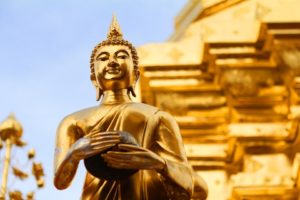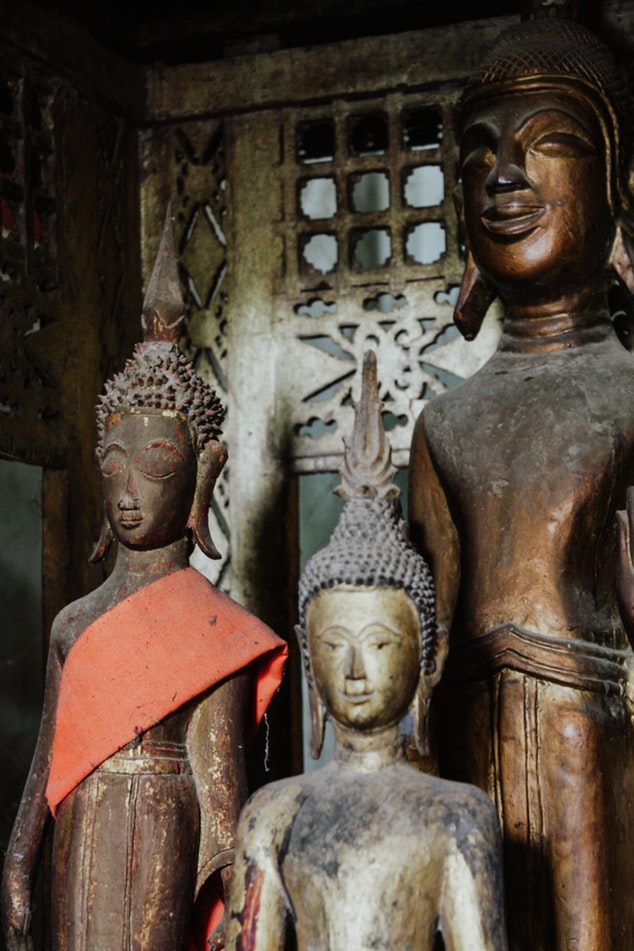Buddhism is in essence, not a religion as such, but a way of life, elements of which are found throughout every walk and way of life, both now, in the past and likely further into the future than people can fathom.
The Buddhist way of life is simply the desire to seek happiness and contentment, while reducing pain and suffering, either as an individual or for varying degrees of sentient life.
This is accomplished through practices such as mindfulness, recognizing and combating negative emotions like anger, cultivating emotions and ideals such as loving-kindness and treating all life equally and fighting constant desire with an acceptance of life as it is as perfect in itself.
Although Buddhism has developed many pathways, both older ones, such as Hinayana (also referred to as Theravada Buddhism) and Mahayana, as well as newer forms in Tibet, Korea, Japan, and much more recently Western Countries, its original teachings can be attributed to the Buddha, Shakyamuni, (or Siddhartha Gautama) although he is by no means the only Buddha, there have been three before him and he taught that there would be one thousand within the lifetime of our universe, the next being Maitreya.
Siddhartha Life
Siddhartha was born roughly two and a half thousand years ago in Nepal, at the time of his birth his father asked a sage what Siddhartha would grow to be, he was told that his son would either be a great ruler or a great spiritual leader. With this knowledge his father attempted to influence Siddhartha’s fate, his belief was that if Siddhartha never knew suffering then he would become a great ruler. His father spoiled him constantly, giving him everything he could desire and more, but never allowing him to leave the palace and see what the life of everyday people was like. Siddhartha married and had a son.

However in his twenty-ninth year of life, curiosity got the better of him, he ventured out of the palace and into the city. Upon seeing the suffering of other people, old age, sickness, poverty and all manners of other struggling it is believed that he was drawn to seek an end to this suffering. He left his wife and son and went to seek spiritual teachers in an attempt to find an end to all suffering.
For six years he tried various meditative practices, even vary extreme forms of asceticism, but saw them to not be leading him to his goals. Realizing this, he resolved to sit in meditation under a Bodhi tree at Bodhgaya until he thought of a way to end suffering. Within a day he achieved complete enlightenment, the point at which he ceased all negative emotions and qualities, and had cultivated all that was positive as well as having realized how to defeat suffering.
He then spent seven weeks meditating at nearby places on his recent realization before going to Sarnath to give his first teaching on the Four Noble Truths, the essential realizations he made on suffering, what suffering was, the causes of suffering, that suffering could be ended, and the Eightfold Path to end it.
The eightfold path contains in essence correct thought, correct speech, correct actions, correct livelihood, correct understanding, correct, correct mindfulness, the correct concentration, these are the principles that must be observed to end one’s suffering.
His earliest teachings
However, in one of his earliest teachings, he taught that one of the most important things to realize about any faith was how important it was to not just follow it blindly but to make an informed decision on whether one could believe the ideals themself and if they were really and truly right for the person.
It is this fundamental fact that makes it different from other religions, there is not any central doctrine that people are told they must follow, merely suggestions made to help people find the right way for them. As long as one can truly believe that what they are doing will accomplish making there own and others live better, that is all that matters.
However this does not mean that there is not a wealth of teachings for those seeking guidance, the Pali Canon, a collection of Buddhist teachings is one of the longest written religious texts, with over twenty-one thousand pages of Sutras (stories), and Discourses. And although this is traditionally a Theravadan text, its teachings can really be applied to anyone’s life, even people who are not Buddhist.
After one has realized that there is suffering and an end to suffering, one must then realize that all life is equal and linked, all life essentially desires less suffering, even if they do not necessarily fully realize it or how to achieve it. Because of this fact it is necessary to realize that one cannot achieve nirvana themselves if they do not also allow others to reduce there suffering. Our actions send out ripples through the universe affecting all facets of life, and eventually to coming back to affect our own lives in the form of the ripening of our karmic potential.
These principles of mindfulness, striving to reduce suffering and better our lives and the belief in karmic potential make up the fundamental elements of mainstream Buddhist belief.





